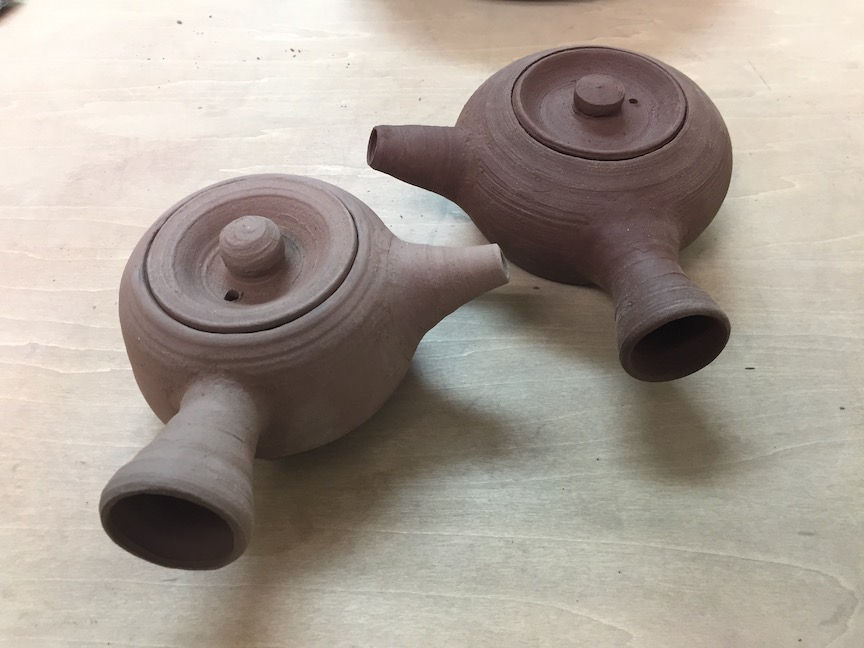Tokoname - still "slippery" with their fine red clay.
- Mikster

- Sep 26, 2020
- 3 min read
Updated: May 21, 2023
Interesting facts about Tokoname: a funny name translating to "slippery ground", super easy access, and carrying a wide range of ceramics work through the pottery history of Japan. (and it is NOT famous for producing the "money cat", this 6m head is just a signpost).
*according to history, the name of Tokoname (slippery ground) came from the region's ground having exposed, slippery clay in the old days.
TOKONAME is a historic pottery town with the easiest access (as compare to most others hidden in perch hills or in rural countryside). I have traveled between Chubu Airport and Nagoya city for 10+ times before I realized Tokoname is one of the stop along the train line! (And it's the 1st stop from the airport train!). Perched up on a hill in the middle of the bustling urban city, the pottery village is walkable from the Tokoname Station. Just store your bags at the station.
Tokoname is one of the Six Ancient Kilns in Japan. It was established around late Heian period (12th century). The area has rich iron-deposit clay from a nearby lake, and was ideally locating in the central part of Japan by the ocean. At the time Tokoname was producing large utilitarian urns and jars with rustic "shibui" natural glaze from wood-firing climbing kilns, with about 3000 ateliers in production. Tokoname was the largest pottery production region in the country.
During Edo period, with the influence of tea culture from China, Tokoname started refining their red clay to make dedicate teapots called "Kyusu"急須. The red (from the iron) gives Tokoname ware the signature look, and artisans started building their skills in making fine and delicate teapots. As the teapot get used overtime, the more shiny and smooth it becomes (as a sheen started to build up).

The 3rd evolution came when urban cities began to develop in the late 1800s. There were high demand for underground ceramics pipes, cable conduits and other industrial ware in Tokyo and Osaka. So Tokoname became an industrial pottery town with over 300 large factories at its peak. Almost every dwellings had a chimney coming out of it. Currently, the climbing kiln with 10 chimneys built in 1887 has been preserved under a big black polygonal structure. From the scale you can tell the size of work back then.

Alleys of Tokoname are lined with defective ceramics pipes and large liquor jars. Turns out they have excellent structural properties. So the locals use them as foundation walls for their houses.
Today, Tokoname's industrial activities died down, and is quietly sitting on the perched hill surrounded by bustling city traffic. Artisans are still producing amazing pottery, and the kyusu teapots are world famous. Some young artisans also station there, developing new works. Roaming up in the perch hill, getting lost in the narrow and winding alleys between black "smoked" houses is fun. Tokoname is probably the only pottery town that has evolved, from 12th century to 21st century, with such wide range of ceramics work. From utilitarian to artistic to industrial.

On my first visit, I popped by Gisui Kiln and asked the master artisan Mr. Kondo Yoshikazu to give me a demonstration of how to make a kyusu teapot. Kyusu is so light-weight and delicate that it takes very skillful hands to throw all the parts thinly, including rims, lips, knobs and all (no trimming). And no blaming on fingers being too fat. And the fun part is piecing all the parts together. Mr. Kondo showed me the most welcoming hospitality.
Once returned to Tokyo, I couldn't wait to try my hands on a kyusu.... without considering there is actually... handedness!!!!!! A friend saw a photo and curiously asked, "Are you left-handed?" OMG.

So that's my great epiphany on kyusu teapot, and I ended up having a leftie and a rightie. Pottery-making is indeed a lifetime of learning.

Tokoname is a great town for half-day relaxing stroll, to see some amazing teapots by Japan's "Human National Treasure" Artisan, or roll up your sleeves and get your hands dirty. The BEST part is, it in tucked in the middle of the city with easy access. Don't miss it!


























Comments